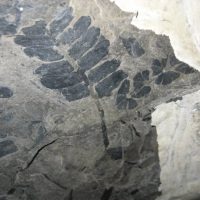
In July 2012, a little over 60 years after the first successful atom smashing, CERN – the European Organization for Nuclear Research – confirmed the existence of a particle believed to be the Higgs Boson, one of the fundamental particles of nature, and the particle which scientists believe gives all other particles their mass.
This important discovery, which allows for a deeper understanding of the building blocks of our universe, would not have been possible without the ground-breaking work of Walton and Cockroft, the physicist duo who first split the atom in 1932.
2016 marks the 65th anniversary of their Nobel Prize for Physics, and with Walton a native of Dungarvan, Co. Waterford, the prize remains Ireland’s only one in the category. The physicists were awarded for their work on atom smashing, a way of splitting the atom of a substance by bombarding it with protons at highly accelerated speeds. Such work is today replicated in particle accelerator experiments the world over; the most famous of which being the CERN laboratory under the French-Swiss border.
Splitting the atom
Walton was a brilliantly talented physicist right through university. His voyage towards the Nobel Prize winning work of the 1930’s began with a scholarship to study mathematics and science at Trinity College Dublin in 1922. Throughout his years at Trinity, Walton received numerous prizes, including the prestigious Foundation Scholarship. It came as no surprise then that he was accepted as a research student under the great Sir Ernest Rutherford at Trinity College Cambridge, following his graduation from Dublin in 1928.
Under Rutherford’s direction, Cambridge’s Cavendish Laboratory – named after British chemist and physicist Henry Cavendish – was the ideal setting for a man as driven and curious as Walton. At the time of his arrival the Laboratory boasted no fewer than four Nobel Laureates on its staff roster. Indeed, since the inception of the Nobel Prize, an astounding twenty-nine members of Cavendish have won one of the prestigious prizes.
In 1931, Walton obtained his PhD from Cambridge, and just a year later – at the ripe old age of 29 – he published his career defining work “Experiments with High Velocity Positive Ions”. It was this seminal work which described the legendary atom smashing experiment which would lead to the Nobel Prize all those years later.
It is said to have happened like this. In April, 1932, Walton reported observing “little stars” in the tiny hut that he and Cockroft had built under their high voltage apparatus in Cavendish. After sending for Cockroft and Rutherford they arrived and later confirmed the observations. Rutherford concluded that Walton’s “little stars” looked a lot like alpha particle scintillations, which are produced by the disintegration of lithium, meaning Walton had become the first person to witness the mutation of an atom by artificial means. He had split the atom.
Walton’s return to Ireland
Walton returned to Trinity College Dublin in 1934 and was later appointed Professor of Natural and Experimental Philosophy. While Walton’s research would never scale the heights of his work during the late 1920s and early 30s, he continued to carry out research at Trinity College until his retirement in 1974. His profound love of the college was demonstrated by his presentation, shortly before his death in 1995, of his Nobel Prize medal to the College.
Ireland has produced numerous scientific minds who have gone on to make many important and fundamental contributions to the world of science, all of which have given us a clearer understanding of the complex building blocks which come together to form our beautiful world. But, as Ireland’s only Nobel Prize winner for physics in the one hundred and fifteen year history of the prize, one could argue that Ernest Walton’s contributions make him Ireland’s greatest ever scientist.
Dr. Alan Hally is a meteorologist in the Research and Applications Division at Met Éireann, Ireland’s national weather service.






